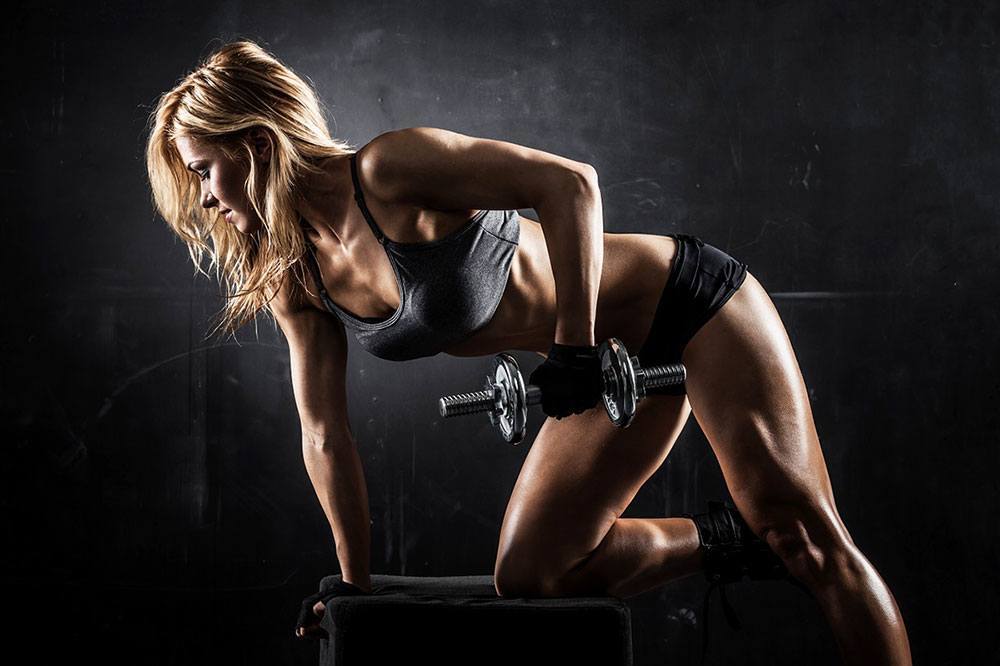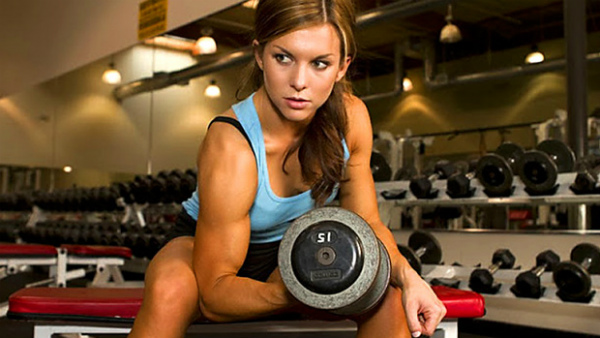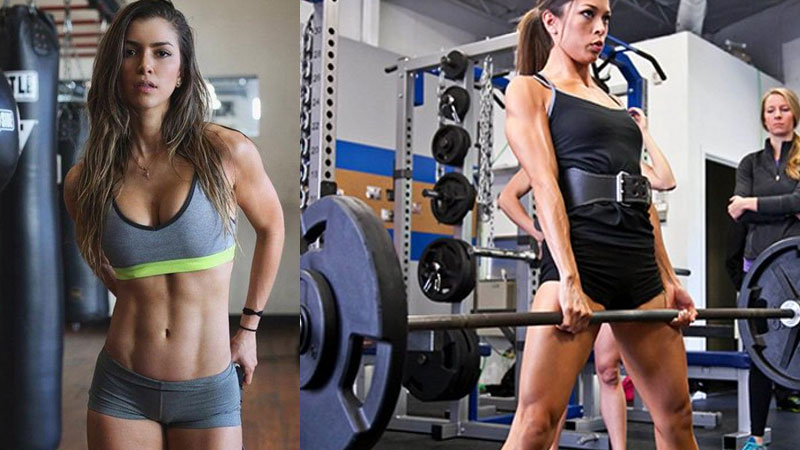
What Are the Benefits of Exercise During Your Period?
There’s no need to stay away from the gym when you’re on your period. Train the right way and you’ll feel energized, stronger, fitter and more motivated.
You might have been told that you shouldn’t exercise when you’re on your period. That exercise might make symptoms of menstruation worse, or that you can hurt yourself.
But that couldn’t be further from the truth.
There are a number of reasons why you should be active throughout your cycle. From health and well-being to athletic and sports performance.
If you skip the gym because you’re on your period you might want to give this article a read.
What actually happens to your body during menstruation?
This isn’t a biology lesson so we’ll keep this section short.
But it is important that you realize some of the changes that happen over the course of a period, so that you understand exactly why you can hit the gym every day.
Period basics
Although we all have different period lengths, most women have a menstrual cycle that lasts between 21-35 days. The average is 28 days.
Your menstrual cycle is the series of changes that occur to prepare your body for pregnancy. It involves changes in various hormonal, chemical and systemic fluctuations to regulate these changes.
The 28 day cycle can be split into 3 phases:
- Menstrual and follicular phase – days 1-14: This is where your uterine lining is shed and menstrual bleeding occurs.
- Ovulation – days 14-15: During this short phase, an egg is released from your ovaries.
- Luteal phase – 15-28: In this last phase, the egg implants itself to your endometrium if fertilized. If not, your uterine lining begins to degrade and your body prepares to shed it.
Changing hormones across the cycle
During each menstrual phase, your hormones shift and fluctuate to force changes to occur.
And while these fluctuations can be complex from a physiology perspective, there are a few major players that you need to know about here.
Estrogen – This is the primary female hormone. It rises during the follicular phase – quite slowly to begin with – but then higher towards ovulation. There is a small peak during days 14-15 before it trails off again. During the luteal phase there is a small increase in estrogen again.
Progesterone – As a hormone responsible for helping your uterine lining mature, it remains low throughout the follicular phase, increasing during ovulation and peaking during the luteal phase.
Testosterone – An important hormone for boosting female athleticism, strength and libido, testosterone is steady throughout the full cycle but has a small peak during ovulation. This is thought to be because an increase in sex drive during your most fertile phase elevates the chance of egg fertilization.
Not only do all of these hormonal changes occur to help regulate the maturation and disposal of eggs, they also have an effect on your body in other ways too.
Your mood can change over the course of 28 days, as can your fitness levels, strength, food cravings, insulin sensitivity and co-ordination.
But here’s the thing ladies…
At no point should you give up physical activity on your period.
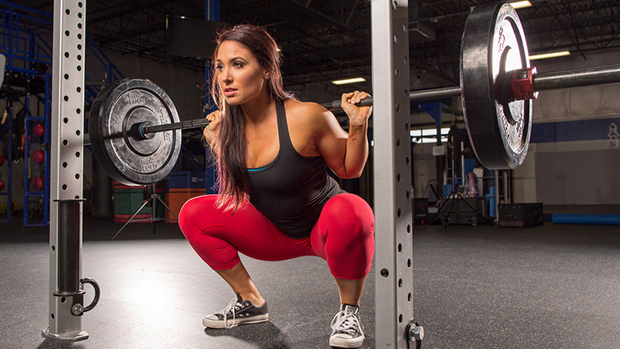
You can exercise when on your period
There are so many benefits to exercise.
Not only does it boost heart, bone and brain health, it keeps you lean too. Being active helps to give your muscles tone and shape, and regular time in the gym decreases your risk of illness as well.
Exercise really does add life to your years, and years to your life.
But many women think that because they are on their period they can’t exercise.
And while some of the symptoms of your period might make you feel irritable, tired or just not in the mood for a strenuous gym session, there are a number of reasons why you should give at least a little bit of physical activity a go.
Ease menstrual cramps with moderate-intensity exercise
If you suffer from uncomfortable cramps or PMS you should definitely lace up your gym sneakers and give some moderate-intensity exercise a try.
When your luteal phase kicks in and progesterone is high, you might suffer from menstrual cramps. You really don’t need to be going to hard with your workouts to get any benefits; even lighter exercise will help to reduce symptoms.
Walking during periods increases circulation as well as endorphin level – your bodies feel good chemicals. It also helps to reduce tension in your abdomen, lower back and legs too.
Experts all agree that regular exercise can help reduce uterine cramps by relaxing the muscles around that area.
Exercise help to reduce stress levels and both the physical and psychological symptoms of cramps.
You can take advantage of your elevated strength and build more muscle
Not all women know this but you are actually strongest during late follicular phase of menstruation.
During the first two weeks of your period, and through to ovulation, your body allows you to work hard in the gym because of the following reasons.
- Pain tolerance is at its highest
- Fatigue levels are at their lowest
- Body temperature is stabilized, but higher during the luteal phase
- Co-ordination and motor skill levels are high
- You perceive higher-intensity exercise to be easier
The follicular phase is a perfect opportunity to ramp up the intensity of your gym sessions and make some real strength and fitness progress.
Not only are your fatigue levels low and your pain tolerance/perception of exercise intensity blunted, your estrogen levels are high – and this is great for reducing muscle damage and promoting recovery. Estrogen is a huge anti-catabolic hormone.
This means a better muscle growth response.
You’ve also got the helping hand of testosterone too as you move closer to the ovulation phase.
So how should you train during your follicular phase?
Go for big lifts, high-volume and heavy weights up to the point that ovulation passes.
It’s a great time to go for a PR or a 1 rep max too!
There’s also some really cool research showing that if you train more frequently during the follicular phase and less in the luteal phase you’ll build more muscle than if you trained a moderate number of times per week consistently throughout your period.
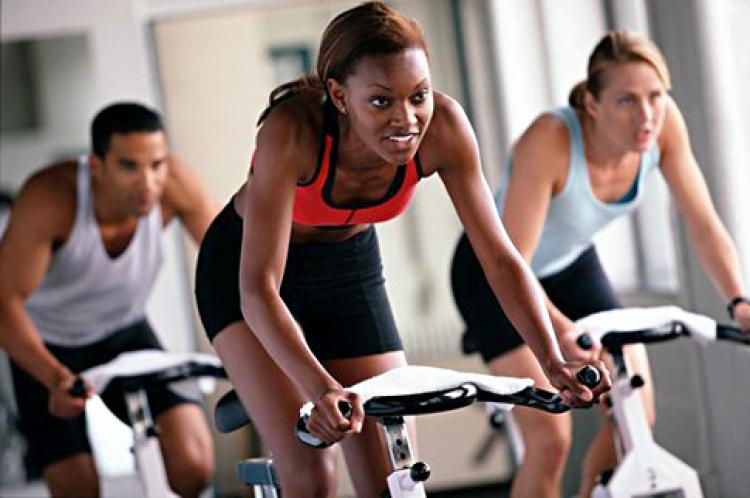
Boost your mood with cardio activities
If you feel low on energy, irritable, anxious or even depressed it can hard to throw everything you’ve got at the gym. Add to that the fact you might be bloated and feel hot and the thought of all-out exercise can be more than off-putting.
If you really can’t muster the energy to lift heavy weights or go for personal records then don’t. But that doesn’t mean you should avoid the gym altogether.
Cardio on your period can be a great and far easier for most women during this time.
Swimming, going for a walk, using a treadmill during periods or even light-intensity activities such as Yoga and stretching are great alternative activities to throw into your routine.
They boost your mood and help to re-invigorate your energy levels too. Just what you need when you don’t feel at your best.
Exercise reduces the effects of menstrual headaches
Many women suffer from headaches around the time that their period visits. Although the exact reasons why are kind of unknown, it’s currently thought to be because of a drop in estrogen.
Menstrual headaches can be more painful than migraines and can really affect your ability to exercise.
However, there’s a considerable number of studies showing that light exercise can help reduce symptoms of these headaches by releasing tension, blood flow and boosting endorphin levels too.
Is there a best workout to do when you have your period?
This one is pretty much impossible to answer. Simply because every woman has different symptoms that affect her abilities in various ways.
Giving blanket recommendation can cause problems because what suits you might not suit every other female.
It’s all about thinking cleverly.
If you feel great and you’re having a good period then get in the gym and use those hormonal fluctuations to your advantage. Life big, lift strong and lift to win.
But if you’re feeling bloated, tired, weak and are suffering cramps, you should reduce the intensity and aim for regular, light-intensity physical activity instead.
